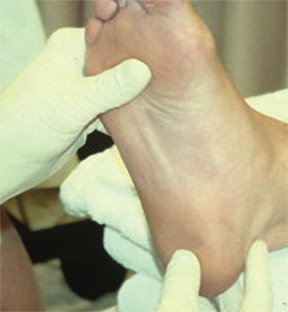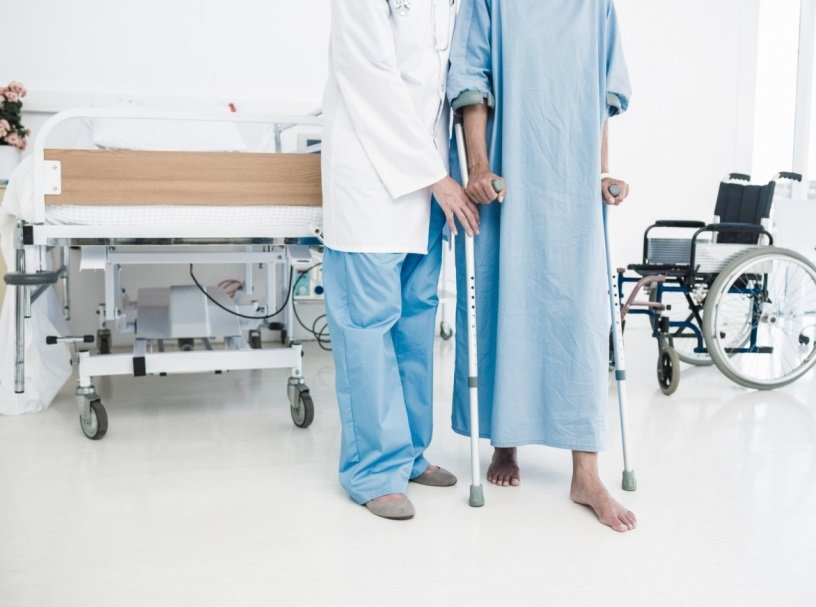Take Care of Your Feet and They’ll Take Care of You
You know that old expression, “no pain, no gain?” Forget it—at least when it comes to your feet. You should not have to live with foot pain on a regular basis, and, if you are putting up with this annoying, uncomfortable problem, you need to—pardon the obvious pun—take steps to remedy it.
Before things get to that point, some regular, preventive care and maintenance will help you avoid problems that can worsen and compound, causing discomfort at best, and long-term health issues at worst. If you still have persistent pain or difficulties performing everyday functions, make an appointment to see a local foot doctor for a checkup and recommendations.
Reasons to Take Good Care of Your Feet
It may seem like a no-brainer, but taking proper care of your feet means remembering to spend a small amount of time each day on them, just as you do to brush your teeth or wash your face. Why go to all the trouble?
First, it isn’t that much trouble, and second, it feels wonderful. Do it mainly to protect your health. You know that your feet are important to you. They keep you moving and active, and are fundamental to starting, building, or simply maintaining a healthy lifestyle. If a problem arises that needs medical attention, you can be out of commission for ongoing treatments or surgery, and we know how frustrating that is when you’ve worked hard to build up an activity level. Some foot problems can be related to poor circulation. If you experience frequent swelling, have circulatory problems, or have diabetes, it is even more essential that you monitor your foot health daily.
Some Causes of Common Foot Problems

Feet can become infected with fungus or viruses if not kept clean. We are exposed to viruses in public showers, at the gym, or anywhere you choose to go barefoot. Viruses like HPV (human papilloma virus), can cause warts in different parts of the skin. When they occur on the bottom of the foot, they are called plantar’s warts, referring to the location on the plantar or bottom. They penetrate small cracks in the skin and take root, sometimes causing great discomfort. Plantar warts can spread and multiply without treatment, although they sometimes go away on their own. There are many varieties of treatment available, depending on the type and location of warts. A foot surgeon can evaluate and treat plantar’s warts, with a plan geared to your specific needs.
Nail funguses can take hold in toenails and fingernails, and may spread from one location to the other. Symptoms include a discolored, whitish, and thickened nail that can become painful. About 50% of abnormal or discolored nails are the result of a fungal infection. The majority of people so infected are men, but women are affected as well. Shoes provide a nice, cozy, warm, dark environment for fungus and bacteria to grow, and sweaty socks or pantyhose just add to the problem. Damp areas, like pools and showers, also encourage the growth and spread of fungal infections.
Best Ways to Care for Your Feet
Preventive care is the most effective, so start today with a simple foot care routine you can do each evening. Always wash feet before bed, to avoid leaving the day’s bacteria and dirt on overnight. If you have a tub, it’s easy to wash your feet under the taps, or briefly soak them in a few inches of water. If not, just use a nice warm washcloth and mild soap for a thorough clean. Think of it as a nightly, at-home spa treatment. Warm is best, rather than hot water. Every few days, apply a foot scrub or use a pumice stone, to keep dead skin and calluses from building up. It’s very important to thoroughly dry feet, especially in between toes, where athlete’s foot, bacteria, and fungus can take root.1
You should already be feeling the stress of the day fading away … and, now, give yourself a mini-massage with your regular hand cream. Use your fingertips to gently massage the overworked soles of the feet, and especially the ball of the foot, along with tight muscles across the instep and top of the foot. After that kind of treatment, you’re sure to sleep like a baby.1
If you use a gym, spa, or public pool, wear flip flops or other easy-on, non-slip shoes for protection.
Avoid Foot Injuries
One of the body parts most likely to be injured, the foot is also one of the most complex, with over 100 muscles and ligaments. Walking upright is a fundamental part of being human, after all, and when injuries interfere with that function, we feel diminished and frustrated by the need to adjust our lives.

The best medicine is, once again, prevention, but how can you prevent or avoid foot injuries? Here are some tips favored by foot specialists:
- Shoes are a key part of your foot care program. Rather than going for the best looking shoe, no matter the fit, reverse your priorities. Shoes should provide good support, to cushion the impact of those hundreds of pounds of applied pressure we put on feet all day, every day.
- If your shoes don’t adequately support your heel and arch, with just enough cushioning and a fit suited to your foot, you risk damage and injury. Note: too much cushioning becomes squishy, and causes your foot to slide around when walking or running.
- Certain parts of the foot are especially vulnerable, like the Achilles tendon, which attaches to the calf at the back of the heel. When we overuse or strain it, a common problem for runners, the sheath around the tendon becomes inflamed and very painful. Wearing high heels shortens the Achilles tendon, which can lead to strain and pain. Alternate shoe heights at least daily, or several times a day, and do light stretching of the calf and heel.1
- Runners need to be especially careful in selecting proper footwear, and in how intensely they train. Rather than pushing to quickly add longer and longer distance in your running routine, build up slowly to give muscles and tendons time to adjust and strengthen.2
Whether or not you run or walk regularly for exercise, it is important to do daily stretches that keep feet and calves as flexible and strong as possible. A simple stretching routine night and morning can be an easy, fast, and gentle way to ensure that your feet will carry you safely through the day. Stand facing a wall, place your palms on the wall, and place one foot behind you, with leg extended, knee straight. Bend the other knee and gently stretch the calf behind you. Switch to the other foot and repeat. Do this several times a day, and you will notice continuous improvement in your flexibility.
If you experience persistent foot pain despite care and prevention, contact a trusted foot specialist for an evaluation.
1. http://www.healthywomen.org/content/article/8-ways-treat-your-feet-right
2. http://www.runnersworld.com/rt-web-exclusive/a-runners-achilles-heel













